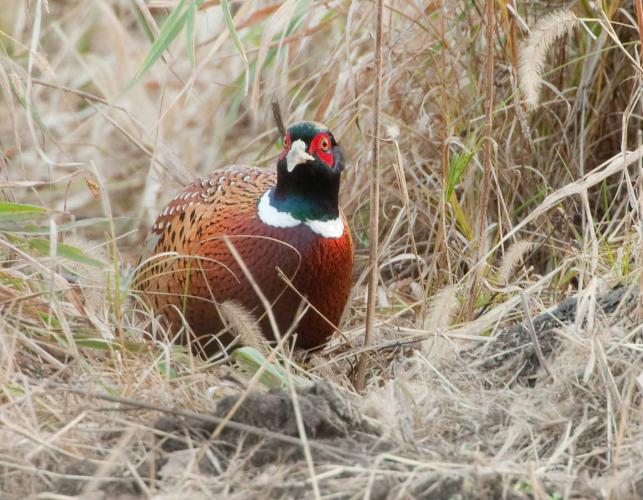Pheasant is a popular game bird, and a great addition to any meal. It is also easy to prepare, and there are many tasty recipes to choose from.
Pheasant is a heavy-bodied bird in the Phasianidae family. It is related to chicken, quail, peafowl and partridges.
Overview of Pheasant as a Food Source
Pheasants are ground-dwelling birds that are primarily found in rural areas near grassy fields and grain crops. They eat insects, weed seeds and grain, as well as small lizards and other small animals.
Their habitat includes wetlands, marshes, riparian areas and grassy fields. They also roost in trees, tall shrubs and hedges or on the ground in weedy ditches, marshes and cattail swales.
During breeding season, hens lay an average of 12 eggs in a nest made of grass and leaves. Hens incubate the eggs for 21 days.
Young pheasants hatch and grow rapidly in the first five weeks of life, mostly relying on insects for food. By 5 weeks, they weigh about 0.5 pounds (225 grams).
Culinary Uses and Traditional Dishes
Pheasant is a close cousin to chicken and can be cooked in a variety of ways. It can be roasted, fried, sauteed, and stewed.
The meat is a good source of protein and can be served as part of a balanced meal. It can also be combined with other vegetables and starches to create a delicious dish.
Pheasant is a great addition to many dishes, especially when it is paired with other ingredients that complement its flavor. Try some of the following recipes to discover a new way to enjoy this bird.
Availability and Market Trends
Across the country, pheasants have become an iconic game bird. These omnivorous, insectivorous birds are often hunted in large numbers and for their meat and eggs.
In many parts of the country, pheasant populations have been negatively affected by habitat loss. This is particularly true for Nebraska, where habitat conversion to cropland has drastically reduced the number of suitable pheasant lands in the state.
Fortunately, there are several strategies that Nebraska is employing to protect and increase pheasant populations. One approach is a bounty program that offers incentives to private landowners to restore grassland habitat on their cropland acres.
Health Benefits and Concerns
Pheasants are omnivorous ground-dwelling birds that eat insects, grains, fruits and seeds. Their diet varies depending on the season and their environment.
In the early stage of life, chicks are almost exclusively fed on insects. Their diet helps them grow rapidly, develop juvenal feathers and survive cold weather.
Their food preferences change in the fall when they build up reserves of fat for winter. These include waste grain, wild seeds, berries and succulent vegetation.
During the breeding season, adult males become aggressive and cannibalism is common among chicks. Cannibalism is caused by lack of space and water, so it is important to provide chicks with enough space and water.
Sustainability Issues
Pheasants are a popular and important species that play a crucial role in upland habitats, and their populations are threatened by environmental change and human pressure. This is especially true in the Jalkot, Kayal, Harban, and Dubair valleys where major infrastructure development projects (dams and mini power generator installations), deforestation, and illegal hunting activities are causing severe degradation of their populations.
Conservation organizations like Pheasants Forever and Quail Forever work on a local level to advocate for better upland habitats and wildlife protection. Their members and volunteers are dedicated to improving upland habitats through habitat improvement, public access, education and advocacy.

